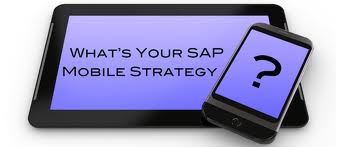SAP Expands Mobile Enterprise Foothold
TAKE NOTE (Insights into the SAP solution and technology)

SAP has announced its plan to acquire Syclo, a SAP partner and a leading provider of enterprise mobile applications and technologies, for an undisclosed sum. Syclo has clients in industries such as utilities, oil & gas, life sciences and manufacturing. This acquisition will add to the growing list of SAP mobile solutions for enterprises. SAP competes with players such as Oracle, Salesforce.com, IBM, and Microsoft.
Mobile Enterprise Market Push
Syclo has a portfolio of products that provide enterprise mobility solutions. It caters to businesses that demand enterprise mobility on smart devices such as tablets and smartphones. It has 600 customers in 39 countries, and SAP plans to integrate these customers under its SAP mobile platform. Enterprise asset management, field services, inventory management and approvals/workflow are some of the apps that may be of value to SAP.
More Acquisitions In The Offering
We may see more acquisitions in this space by SAP in the near future. Businesses are moving toward providing more flexibility to employees in terms of access to enterprise information. This is driving the adoption of smartphones and tablets as a medium to check work-related information. Currently, this is not a major driver for SAP’s stock price, but as more SAP applications get deployed on the cloud, this may become a major source of revenue for SAP.
UNDER DEVELOPMENT (Information for ABAP Developers)
Controls Technology – What Every ABAP Developer Needs to Know……
In this months blog I will begin to take a look at the SAP Controls Technology and how we can use it in our development.
Lets start out by defining a control of the Controls Technology. Controls are independent binary software components that are installed on a local PC (the presentation server). When you install a local SAP GUI on your machine, the system also installs the appropriate controls. The SAP GUI functions as a container for controls at the front-end. Controls can either replace or work alongside classical ABAP components, and can either be ActiveX controls or JavaBeans.
Typical examples of Controls Technology controls are:
Q&A (Your Questions answered)
Q. I read some docs but could not understand clearly the concept—V1,V2,V3 updates….Can you explain?
A. The update mechanism is a part of the SAP application server ABAP which ensures the transactional integrity during the change of different data records within the database. Several data changes are collected in the application servers preliminarily and get written to the database at a later time in a single chunk. This processing which finally writes the data records to the database is called the update processing and get’s triggered by the ABAP command COMMIT WORK, implied or explicit, and takes place inside an update or update-2 work process. It is actually not the data records themselves that are collected but a set of ABAP functions (update modules).
– V1 denotes time-critical updates used for updating the actual transaction tables.
– V2 denotes non-time-critical updates used for updating statistics tables related to the transaction tables.
For instance, after a sales order entry transaction is completed, the corresponding sales order tables would be updated in V1 mode, and the corresponding statistics tables, search helps…etc would be updated in V2 mode.
– V3 update mode(Uses delta queue technology) is similar to the V2 update mode. The main difference is that V2 updates are always triggered by applications, while V3 updates may be scheduled independently
If you have a technical question you’d like answered, post the question to our facebook page www.facebook.com/itpsapinc

